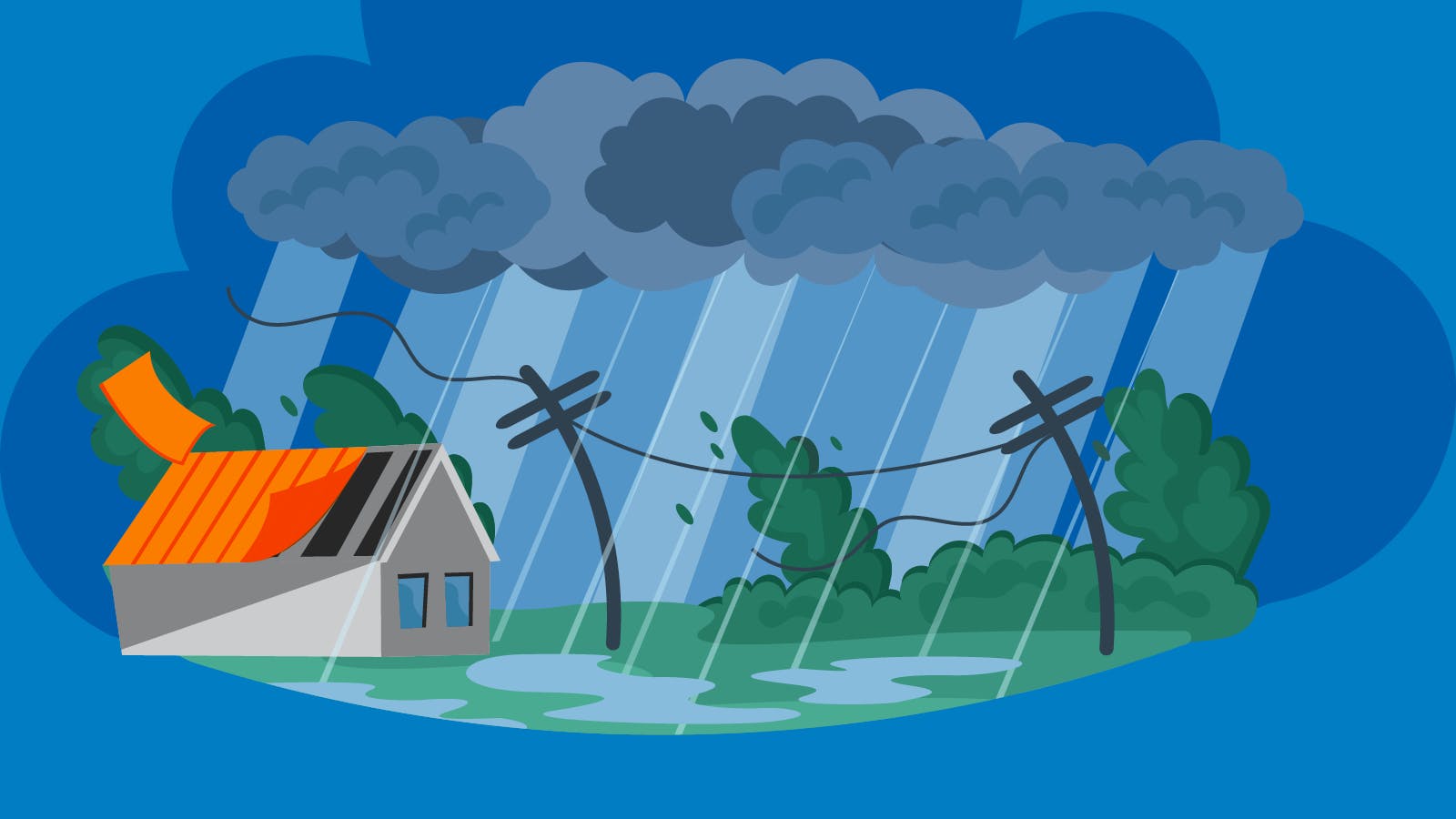

Natural disasters are an unfortunate reality for millions of homeowners across the nation. And, even more unfortunately, they’re on the uptick.
Last year, the United States saw 27 weather disaster events. Total losses exceeded $1 billion in each instance. Now compare that to the annual average number of these kinds of events from 1980 to 2024 — which was just 9.
This phenomenon illustrates why it’s critically important to develop an understanding of (and action plan for) potential natural disasters, in case you find yourself facing one. That’s true whether you’re a current homeowner or are planning to buy.
If you’re currently rebuilding after a natural disaster, or if you’re simply preparing an emergency plan just in case, here’s what you need to know:
There’s always a chance that your home might be impacted by a natural disaster event.
Depending on where you live, you might be at risk of:
If you’d like to learn more about your area’s risk, The Federal Emergency Management Agency has developed an interactive National Risk Index map. This includes data on expected annual loss, social vulnerability, community resilience, hazard type risk rankings, and more. Stats are organized by each individual county.Remember: While this information can be anxiety-inducing, it can also be powerful. Building a plan for your specific area could make a huge difference in your experience if a natural disaster were to hit.
Once you know more about your area’s risk factors, you might want to put some plans in place.
The Environmental Protection Agency offers some great general guidance on planning and preparing for potential natural disasters. Actionable steps range from subscribing to emergency alerts to creating an emergency plan for your household.
As a homeowner, you might also try to preemptively gather some important documents. This includes a copy of your deed, Social Security cards, passports, marriage certificates, insurance policies, medical records, wills, tax returns, bank statements, family photos, and any other irreplaceable items.
Consider storing these items in a water- or fireproof container, depending on the natural disasters common in your area. You might also consider storing copies in a safe, off-site location, like in a safety deposit box.
If you do find yourself facing a natural disaster, The Red Cross offers detailed disaster recovery guides that walk you through what to do in the immediate aftermath.
Of course, safety should be the first priority. Always call 911 if you are in immediate danger and need emergency help. Once everyone is safe, you’ll also want to follow any guidance or instructions provided by local authorities and emergency response teams.
Then, it’s time to start rebuilding your home life.
As soon as you’re in a stable location and have some time to make a phone call, you should file a homeowners’ insurance claim.
The next steps will depend on your policy, so ensure you understand exactly what the provider can cover.
Next, reach out to providers like the Red Cross, the Salvation Army, AmeriCorps Disaster Response Teams, the Federal Emergency Management Agency (FEMA), and the Small Business Administration (SBA).
These organizations may be able to help with financial aid for temporary housing. They might also offer home repair/replacement assistance.
Keep in mind that you may qualify even if you also have insurance. Disaster relief providers may be able to help cover certain costs that don’t fall under your policy.
So, what ultimately happens to your mortgage if you lose your home in a natural disaster?
In most cases, per the United States government, homeowners are still responsible for repaying their mortgage and property taxes even if the home is lost in a natural disaster.
You should contact your mortgage provider as soon as reasonably possible to determine any details, though, as you might have some additional options.
These could include:
Millions of homeowners deal with damage and destruction to their homes every year. And, with natural disasters on the rise, that figure will likely keep ticking up.
Of course, it’s not a reality anyone would choose. But just a little guidance and preparation can go a long way.